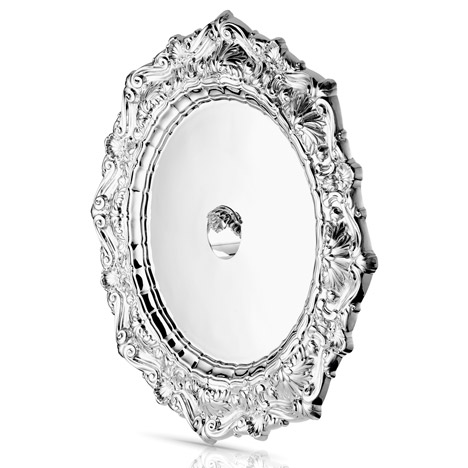French artist Didier Faustino has included a salacious hole in the centre of this ornately framed silver mirror.
Didier Faustino's mirror – titled Terra Incognita (Glory Hole) – is silver plated to create a reflective surface across the flat panel and its decorative Baroque-style frame.
In the middle of the piece is a small circular opening, designed to reference a glory hole.
A glory hole is a gap made in a partition, usually between public toilet cubicles, that an individual puts their penis through to receive anonymous oral stimulation.
On Faustino's mirror, the hole is capped with a small adornment to match the elaborate surround.
"The Baroque trophy and its reflection deforms the image of the spectator," said Faustino. "This effect guides our judgement on the field of anxiety, embarrassment, perplexity and paradoxically contemplation."
Terra Incognita – which translates as "unknown land" – was created for an exhibition to celebrate the 140th anniversary of Portuguese silver company Topázio.
Faustino designed the mirror to merge "an ornamental piece and a fragment of vanity".
The artist took influences from early texts on Queer Theory, which took critical approaches to issues of sexual identity, as well as literary work by 18th century French aristocrat Marquis de Sade – known for his libertine sexuality.
"Referring to the 'queer readings', literature of the 1970s, and the writings of Le Marquis de Sade, this work highlights a praise of the transgressive aspect of our pleasures," said a statement from Faustino.
The Topázio – 140 Years of Silver exhibition opened on Saturday at Lisbon's Museu do Design e da Moda (MUDE) and runs until 28 March 2015.

